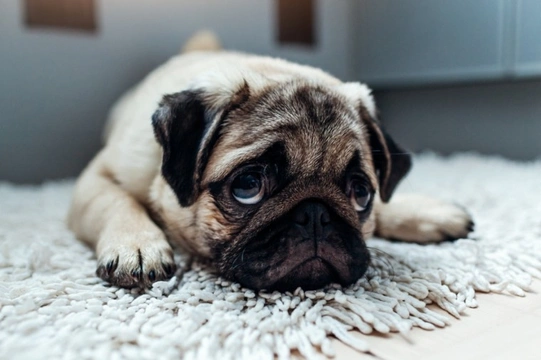
Six ways to reduce separation anxiety in your dog when you return to the office
As the most acute stage of the UK’s Covid-19 lockdown looks to be coming to an end and the country prepares for a staged return to something like normal, many people who have been furloughed from work or working from home during this time are preparing to go back to their workplace.
Whilst few people have actually enjoyed the time we’ve spent in lockdown, for many dog owners it has also come with the chance to spend a lot more time with the dog than normal, and some people even found themselves able to get a new dog or puppy during this time, as it also meant having enough free time to dedicate to them.
However, there’s a downside to this for your dog too – now that they’ve got used to you being at home with them all day (or for some people’s new dogs and puppies purchased during lockdown, having never known any different) when you go back to work, this will be a big upheaval for them.
Dogs need clear rules and boundaries and a set routine to their lives in order to be happy and confident and feel secure, and any time their routine changes, this should ideally be handled gradually and with care. When you first started spending a lot more time at home, this was a positive change in the eyes of your dog as they got more attention and time with you.
However, the change when you go back to work will be rather different; not only is this something they’ll have to deal with as a change in the routine they had got used to, but there is also the possibility that they’re going to suffer from separation anxiety as a result of the change.
Spending all or most of the day with your dog over a protracted period of time like lockdown and then leaving your dog at home all day when you go back to work as normal is a big transition for your dog, and many dogs will be distressed by this, and will potentially suffer from separation anxiety as a result.
This article will provide you with some tips and advice on how to ease your dog into the transition, and help to avoid and mitigate separation anxiety in your dog when you return to work. Read on to learn more.
1. Easing your dog back into spending time alone
First of all, you may not get much notice of when you’re needed back at work, but you probably know that this is coming; and so you should begin getting your dog back into spending time alone now.
As lockdown restrictions have begun to ease, this can mean we’re able to spend more time out of the home, giving opportunities to leave your dog alone for progressively longer periods of time.
In support of this and particularly if you’re not able to go out much, get your dog used to being in a different room from you instead or as well.
How long you leave your dog for when working
Dogs shouldn’t be left alone without someone to check on them, let them stretch their legs, and give them the chance to do their business for the length of a full workday, some 8-10 hours including travel. So make sure you or someone else can come in during the middle of your work day to welfare check them, walk them if possible, and take care of their needs.
2. Providing a reassuring, comfortable and safe place
Separation anxiety makes dogs feel insecure, and so they need things to provide them with comfort, familiarity, and a sense of safety. A crate, bed or den is a great start, with familiar blankets and toys. This should be somewhere snug and quiet, ideally in a corner rather than out in the middle of a room.
3. Providing entertainment
If your dog is bored or lacking in stimulus their anxiety will be more acute and harder to control. You can divert them by providing things to entertain themselves with while you are out, including favorite toys.
Puzzle games that decant treats or things you can stuff with treats to keep your dog trying to reach their prize are a great way to divert your dog and get them to settle when you go out too.
4. Meeting their needs
Your dog’s routine will be different when you return to work; this may mean changing their feeding times and walks, and mean that your dog needs to toilet at different times too, so bear this in mind.
When you do go back to work you may well be more tired than normal as you’re not used to it! This can lead to a tendency to neglect your dog’s walks or cut them short; but this is the time when your dog needs more, rather than less, exercise than before if possible.
5. Setting the new routine
Try to ease into your dog’s new routine; don’t suddenly alter their walking and feeding times the day you go back to work. Work into it gradually so that the transition is not such a shock when you’re back to normal.



